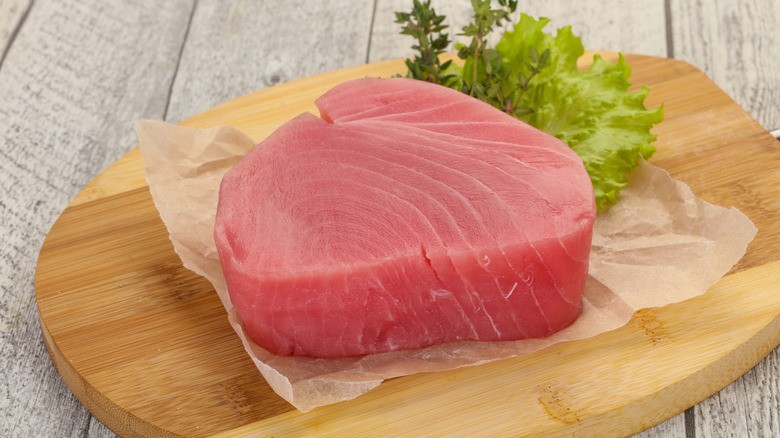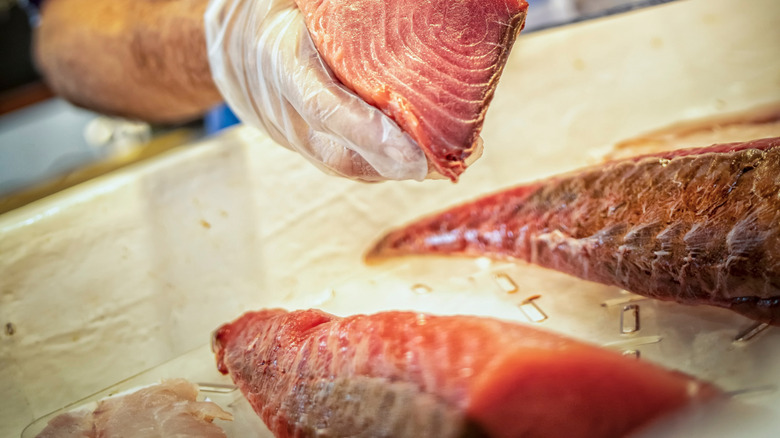What To Look For When Buying Ahi Tuna
Tuna lovers know that ahi is different from albacore and comes with a host of qualifications. A fresh oceany smell, translucent ruby flesh, and a nice shiny sheen all suggest the fish is top-quality and fresh. Even if you aren't looking for a sushi-grade ingredient, these three factors are important for identifying the rough quality of ahi tuna at first glance.
If you see something that's slightly matte brown, dry, and reeks overwhelmingly of fish, avoid it at all costs. Brown on any raw meat means it has oxidized from exposure to air, and the smell of bad fish comes from bacterial growth and the breakdown of its muscle fibers. In short, these three signs all point to decomposition.
If your tuna comes packaged, check to see if the label includes mention of any added artificial color. It's important to note that one way to preserve the color of fresh ahi is to gas it with carbon monoxide. The FDA declared this Generally Recognized as Safe and requires providers to label gassed ahi tuna as such. However, enforcement of this is weak, so if you don't live anywhere near the ocean, those bright red steaks were likely either frozen or gassed — and may not be fresh at all.
Unfortunately, the only reliable way to understand the quality of your ahi is to know your fish provider well. Ask them where it was sourced, how it was handled and shipped, and when it arrived at their store.
The different grades of ahi tuna
Firstly, "sushi-grade" is more of a casual term, not an official grading observed by any regulatory body and only means the vendor claims the fish is safe to eat raw. The real grades, in descending order, are 1, 2+, 2, and 3. Fish sellers grade tuna off its appearance when landed and butchered, size and shape, color, texture, and fat. Graders gather samples from a crescent cut around the base of the tail and use a tool called a "Sashibo" to pull a plug of meat from its dorsal fin down to its belly. These samples are the best indicator of the whole ahi's quality and don't compromise the meat's integrity.
To earn a grade 1 rating, ahi tuna flesh must be deep red — almost like watermelon — while still remaining translucent and full of flavorful fat. Its texture must be smooth and free of any bumps, blemishes, and grit. At the time of grading, the fish is as fresh as it can possibly be, so the smell doesn't factor in.
If you're looking for grade 1 tuna, then best of luck to you. This quality of fish is most often sold directly to sushi purveyors, but it can still absolutely be found from reliable sources. However, there are plenty of 2+ and 2-grade tuna out there for regular buyers with no shortage of collars, cheeks, and bellies that are perfect for peppered and grilled ahi tuna or a Hawaiian tuna poke bowl.


